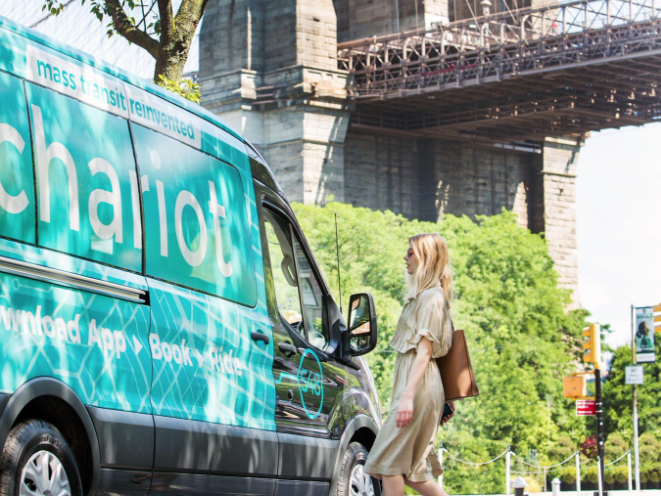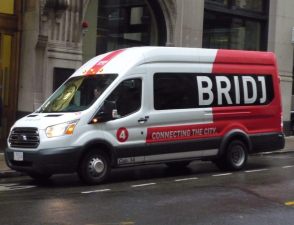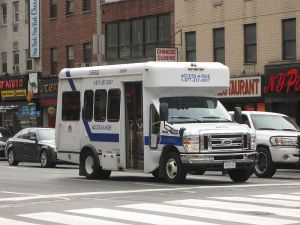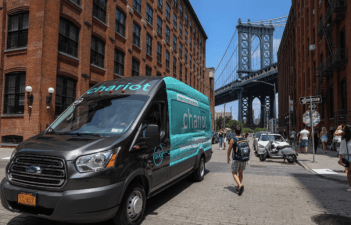Ford’s Chariot Vans Are Mostly Empty
It's like a "dollar" van with less than one-tenth the amount of riders.

Ford’s Chariot van service — which has been hyped as a key addition to the urban transit network, but is little more than $4 bus rides along set routes in areas already well served by existing service — is proving to be a big, expensive failure.
Chariot’s chariots are mostly empty most of the time, according to data provided by the company and crunched by transit analyst Eric Goldwyn.
Even on its best-performing weeks, Chariot’s fleet of 25 or so vans only serves around 1,000 riders total, or about nine riders per vehicle per day. The overall average is much lower — just five riders per vehicle per day. The service has routes, including a Greenpoint-DUMBO run and a Williamsburg-Midtown route.

The ridership pales in comparison to the “dollar” vans that travel up and down Flatbush Avenue and other under-served parts of the city. On an average day, a single dollar van will carry between 125 and 150 trips, said Goldwyn, who studied the vans as a doctoral student at Columbia University last year.
The Chariot data supports real-life experience: In May, TransitCenter’s Joelle Ballam-Schwan tested the service for a seminal blog post. On her first trip, Ballam-Schwan rode alone from Greenpoint to the Financial District. The second trip fared a bit better — she was joined by one other passenger.
Despite the numbers, a spokesperson for Chariot said the company has “been pleased with the ridership … to date.” The company is now focused on building “enterprise” routes for private businesses and organizations, the spokesperson said, referring Streetsblog to a blog post articulating as much.
Two of these routes are already operating for residents of luxury buildings in New York: One, along 42nd Street, serves the Oskar high-rise at 42nd Street and 11th Avenue. The second carries residents of the Durst Organization’s Hallets Point high-rises in Astoria to subway connections in Long Island City.

It is unclear what Ford is doing with Chariot, which it bought for $65 million in 2016, based partly on its wider appeal in San Francisco. In New York, Chariot appeared to be positioning itself as a transit alternative during next year’s L train shutdown. But the shift to serving luxury apartment residents in transit deserts suggests the company has given up on its commuter-based approach.
Chariot’s souped-up dollar vans are being billed as “micro-transit.” Given the negligible ridership in New York City, the moniker fits.


